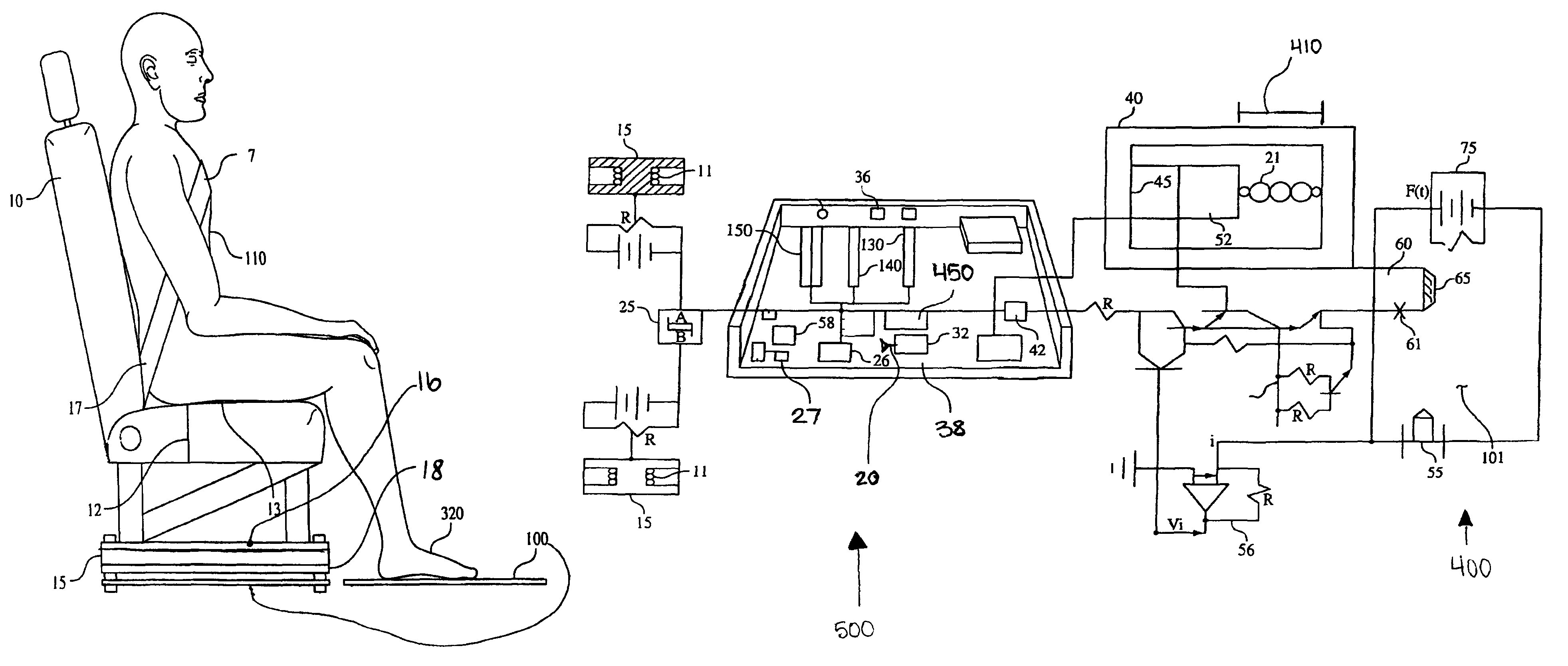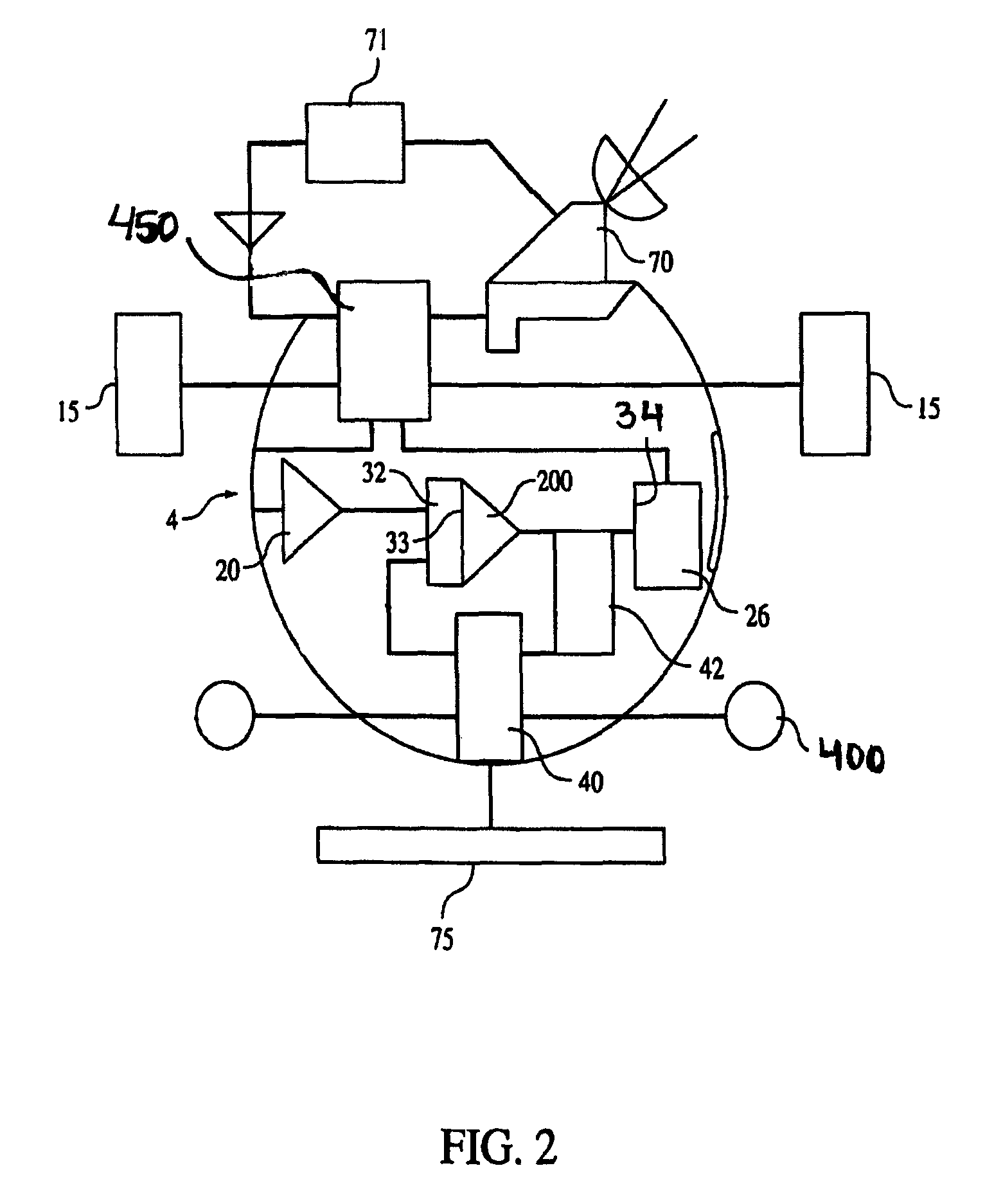Advanced weight responsive supplemental restraint computer system
a technology of supplemental restraints and computer systems, applied in the direction of electric devices, pedestrian/occupant safety arrangements, tractors, etc., can solve the problems of serious injury, real and perceived hazards of airbag use, and many injuries
- Summary
- Abstract
- Description
- Claims
- Application Information
AI Technical Summary
Benefits of technology
Problems solved by technology
Method used
Image
Examples
Embodiment Construction
[0037]The present invention discloses a mechanism for providing controlled air bag deployment based on the weight of a vehicle occupant. In this regard, the mechanism variably controls the amount of gas in a combustion chamber, which propels the airbag (1). The air bag can deploy with as little or as much force as is appropriate based upon the occupant's weight and the severity of the collision. As shown in FIG. 4, the controlled release of gas (65) from the gas canister (60) is accomplished by the release valve configured with the sliding pot (61), which is open a specific amount as a result of the energy generated by the accelerometer (40). As a result, the force of deployment of air bag (1) correctly matches the force of occupant (110) on seat (10), occupant (110) and seat (10) showing in FIG. 1.
[0038]With reference to FIG. 1, seat cushioning (12) and floor (100) are shown. Seat (16) is mounted on a load cell (15), which is disposed between a seat mounting frame (16) and the floo...
PUM
 Login to View More
Login to View More Abstract
Description
Claims
Application Information
 Login to View More
Login to View More - R&D
- Intellectual Property
- Life Sciences
- Materials
- Tech Scout
- Unparalleled Data Quality
- Higher Quality Content
- 60% Fewer Hallucinations
Browse by: Latest US Patents, China's latest patents, Technical Efficacy Thesaurus, Application Domain, Technology Topic, Popular Technical Reports.
© 2025 PatSnap. All rights reserved.Legal|Privacy policy|Modern Slavery Act Transparency Statement|Sitemap|About US| Contact US: help@patsnap.com



